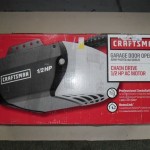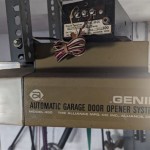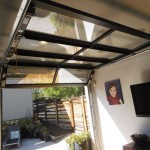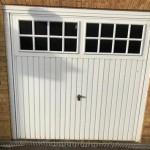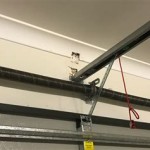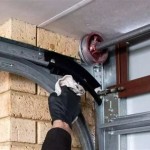How To Install Outside Garage Lights: A Comprehensive Guide
Installing outside garage lights significantly enhances both the security and aesthetic appeal of a property. Proper lighting deters potential intruders, improves visibility for safe navigation around the garage area, and adds to the overall curb appeal of a home. This article provides a detailed, step-by-step guide on how to install outside garage lights safely and effectively, covering essential tools, wiring considerations, and fixture mounting techniques.
Planning and Preparation: Essential First Steps
Before commencing the installation process, meticulous planning is crucial. This includes selecting suitable lighting fixtures, ensuring compatibility with the existing electrical system, and gathering the necessary tools and materials. Neglecting these preliminary steps can lead to safety hazards, installation errors, and potential damage to the electrical system.
The first consideration is selecting the appropriate type of outdoor garage lights. Options include motion-sensor lights, which provide added security by automatically activating when movement is detected, and standard lights, which remain on continuously or can be controlled by a switch. Consider the desired brightness and energy efficiency when choosing between LED, incandescent, or halogen bulbs. LED lights are generally recommended due to their long lifespan and low energy consumption.
Next, assess the existing electrical infrastructure. Determine the voltage of the existing wiring and ensure that the new lights are compatible. Most residential properties utilize 120-volt systems. If unsure, consult a qualified electrician. Verify that the electrical circuit has sufficient capacity to handle the additional load of the new lights. Overloading a circuit can cause breakers to trip or, in severe cases, pose a fire hazard.
A comprehensive checklist of tools and materials is essential: * New outdoor garage lights (including mounting hardware) * Electrical multimeter * Voltage tester * Wire stripper/cutter * Wire connectors (wire nuts) * Screwdrivers (Phillips and flathead) * Drill with appropriate drill bits * Ladder * Safety glasses * Work gloves * Electrical tape * Pencil or marker * Level * Exterior-grade caulk * Fish tape (optional, for running wires through walls)
Prior to beginning any electrical work, it is imperative to disconnect the power supply to the circuit at the main electrical panel. Locate the circuit breaker that controls the garage lights and switch it to the "off" position. To ensure the power is completely off, use a voltage tester to confirm that no electricity is flowing to the existing wiring.
Wiring and Electrical Connections: Ensuring Safety and Compliance
Proper wiring is paramount to the safe and reliable operation of outdoor garage lights. Incorrect wiring can result in electrical shocks, short circuits, and potential fire hazards. Therefore, it is crucial to adhere to all applicable electrical codes and safety guidelines.
Identify the existing wiring configuration in the junction box where the new lights will be connected. Typically, there will be three wires: a black (hot) wire, a white (neutral) wire, and a green or bare copper (ground) wire. Use the voltage tester to double-check that the power is off before proceeding.
Using the wire stripper/cutter, carefully strip about ¾ inch of insulation from the ends of the wires on both the existing wiring and the new light fixture. Ensure that the copper conductors are clean and free from corrosion. Twist the exposed copper strands of the matching wires together – black to black, white to white, and green/bare copper to green/bare copper. Secure the connections with wire connectors (wire nuts), twisting them clockwise until they are firmly tightened. Gently tug on each wire to ensure that it is securely connected.
After securing the wire connectors, wrap each connection with electrical tape to provide an extra layer of insulation and prevent accidental contact with other wires or the metal junction box. Carefully tuck the connected wires back into the junction box, ensuring that they are not pinched or strained. Overcrowding the junction box can damage the wires and create a potential hazard.
If the existing wiring is inadequate or damaged, it may be necessary to run new wiring from the electrical panel or another existing junction box. This task may require the use of fish tape to pull the wires through walls or conduit. If unsure about how to safely and correctly run new wiring, consult a qualified electrician.
When connecting motion sensor lights, it’s equally important to follow the manufacturer’s wiring diagram closely. These diagrams usually outline specific wiring configurations that include sensitivity and range settings. Incorrect wiring can cause the sensor to malfunction or not function at all.
It is also important to consider weatherproofing aspects. Use exterior-rated junction boxes and weatherproof connectors to prevent moisture from entering the electrical system. Moisture can corrode the wiring and create a short circuit. Apply exterior-grade caulk around the edges of the junction box where it meets the wall to create a waterproof seal.
Mounting the Lights: Achieving Secure and Aesthetically Pleasing Installation
The secure mounting of outdoor garage lights is critical for both safety and aesthetics. Properly mounted lights will withstand weather conditions and provide consistent illumination. Improper mounting can lead to the lights becoming loose, falling, or causing damage to the surrounding structure.
Locate the appropriate mounting location for the new lights. Consider factors such as the desired lighting coverage area, the proximity to the garage door, and the overall aesthetic appeal. Use a pencil or marker to mark the mounting holes on the wall.
If mounting the lights on siding or other non-load-bearing surfaces, it may be necessary to install a mounting block or backplate to provide a solid foundation. The mounting block should be securely attached to the underlying framing using screws or bolts. Ensure that the mounting block is level before attaching the light fixture.
Using a drill with the appropriate drill bit, pre-drill pilot holes at the marked locations. The size of the drill bit should be slightly smaller than the diameter of the mounting screws. This will prevent the wood from splitting and make it easier to drive the screws.
Carefully align the light fixture with the pre-drilled holes and attach it to the wall using the provided mounting screws. Tighten the screws securely, but avoid over-tightening, which can damage the fixture or the mounting surface. Use a level to ensure that the light fixture is perfectly aligned horizontally.
After the light fixture is securely mounted, apply a bead of exterior-grade caulk around the edges of the fixture where it meets the wall. This will create a waterproof seal and prevent moisture from entering the gap. Smooth the caulk with a finger or a caulking tool for a neat and professional finish.
Consider the angle of the light when installing. If you want to illuminate a driveway, make sure the angle is optimized. Some lights have adjustable heads, making it easier to direct the light where it is needed most.
For lights equipped with photocells (light sensors), make sure the sensor is not blocked by any obstacles. The photocell needs to be able to detect changes in ambient light to function correctly.
Once the mounting and wiring are complete, restore power to the circuit by switching the circuit breaker back to the "on" position. Test the new lights to ensure that they are functioning correctly. If the lights do not turn on, double-check the wiring connections and the circuit breaker.
Finally, cleanup the work area. Remove any debris, tools, and materials. Dispose of any waste properly. A clean and organized work area is essential for safety and prevents accidents.
Troubleshooting Common Issues: Addressing Potential Problems
Even with careful planning and execution, issues may arise during or after the installation of outdoor garage lights. Understanding common problems and their solutions can save time and frustration.
One common issue is the lights not turning on after installation. The first step is to double-check the circuit breaker to ensure that it has not tripped. If the breaker has tripped, reset it. If the breaker continues to trip, there may be a short circuit in the wiring. Carefully inspect the wiring connections and look for any signs of damage or loose connections.
Another potential issue is flickering lights. Flickering can be caused by loose wiring connections, a faulty light bulb, or voltage fluctuations. Check the wiring connections and tighten them if necessary. Replace the light bulb with a new one. If the flickering persists, consult a qualified electrician to investigate the possibility of voltage fluctuations.
Motion sensor lights may not function correctly if the sensor is obstructed or if the sensitivity settings are not properly adjusted. Ensure that the sensor is free from any obstructions, such as shrubs or trees. Adjust the sensitivity and range settings according to the manufacturer's instructions.
If the lights flicker during wet weather, there may be a moisture problem. Check the weatherproof seals around the junction boxes and light fixtures. Apply additional caulk if necessary to create a tighter seal. If moisture is entering the electrical system, consult a qualified electrician to address the underlying issue.
If problems persist or if unsure about how to safely address any electrical issues, it is always best to consult a qualified electrician. Attempting to repair electrical issues without proper knowledge and experience can be dangerous and may violate local electrical codes.

How To Install Outdoor Porch Lights

How To Install And Wire Outdoor Light Fixtures Easy Home Diy Project Youtube

How To Install Outdoor Light Fixtures Replace Garage Lights

How To Install A Garage Floodlight

Diy Install New Outside Driveway Lights Garage Wall Lanterns

Install Soffit Lighting Lumary Smart Recessed

How To Install Lights In Your Vans Garage Youtube

How To Install An Exterior Light Add Outlets With No Extra Wiring

Diy How To Install Outside Garage Lights With No Previous Holes

My Exterior Lighting

